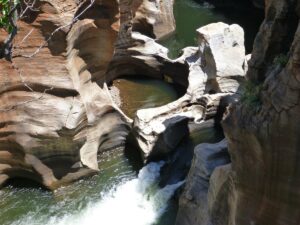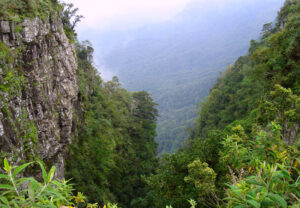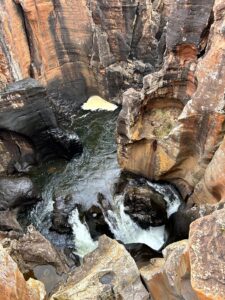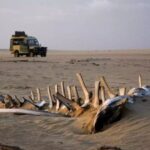 South Africa’s Panorama Route is one of the country’s most scenic drives, offering stunning views, dramatic landscapes, and exciting stopovers. For those planning a safari, this route makes for the perfect pre-safari adventure. The Panorama Route introduces visitors to the natural beauty and diversity of the region, preparing them for the awe-inspiring wildlife experiences that follow. Whether you’re a first-time visitor or a seasoned traveler, exploring the Panorama Route is a must-do before diving into a safari in nearby Kruger National Park.
South Africa’s Panorama Route is one of the country’s most scenic drives, offering stunning views, dramatic landscapes, and exciting stopovers. For those planning a safari, this route makes for the perfect pre-safari adventure. The Panorama Route introduces visitors to the natural beauty and diversity of the region, preparing them for the awe-inspiring wildlife experiences that follow. Whether you’re a first-time visitor or a seasoned traveler, exploring the Panorama Route is a must-do before diving into a safari in nearby Kruger National Park.
Discover the Beauty of the Panorama Route
The Panorama Route, located in the Mpumalanga province, stretches along the rugged eastern escarpment of the Drakensberg Mountains. This picturesque drive is renowned for its breathtaking views, waterfalls, and canyons, making it a top destination for nature lovers. It’s not just the visual spectacle that draws travelers; the area also boasts a rich history and offers a peaceful contrast to the more intense excitement of a safari.
The route covers several key attractions that are ideal for exploration. Each site offers something unique, from the towering peaks to the peaceful rivers below. Let’s explore some of the highlights of the Panorama Route, perfect for a day or two of relaxation before your wildlife adventure begins.
The Iconic Blyde River Canyon
One of the main highlights of the Panorama Route is the Blyde River Canyon. It’s the third-largest canyon in the world, and its lush, green slopes make it one of the most spectacular canyons you’ll ever see. Visitors often stop at various viewpoints along the route to take in the stunning scenery. Among these, the Three Rondavels is perhaps the most famous. These three towering rock formations resemble traditional African huts, and the views from this spot are truly unforgettable.
As you stand on the edge of the canyon, you can see the Blyde River winding its way through the bottom. The lush vegetation and diverse ecosystems found in the canyon make it a beautiful contrast to the drier bushveld of Kruger, just a short drive away. This makes the Panorama Route the perfect transition from the towering mountains to the vast plains of your upcoming safari.
God’s Window: A View Like No Other
 Another must-visit stop along the Panorama Route is God’s Window. This viewpoint is appropriately named because, on a clear day, it feels like you’re looking out over the edge of the world. From this spot, you can see as far as Mozambique, with vast plains, deep valleys, and distant mountains stretching out before you.
Another must-visit stop along the Panorama Route is God’s Window. This viewpoint is appropriately named because, on a clear day, it feels like you’re looking out over the edge of the world. From this spot, you can see as far as Mozambique, with vast plains, deep valleys, and distant mountains stretching out before you.
The short walk to God’s Window leads through a peaceful forest, adding to the charm of the experience. There are several other viewpoints nearby, offering slightly different angles of the breathtaking landscape. This is the perfect spot for photos, and it’s also a great place to reflect on the journey ahead as you transition from the highlands to the bushveld.
Waterfalls of the Panorama Route
The Panorama Route is home to some of the most beautiful waterfalls in South Africa. The region’s abundance of rainfall, combined with its dramatic landscape, means there are several cascading waterfalls to explore along the way. Each waterfall offers a unique charm and adds to the scenic beauty of the route.
- Lisbon Falls is one of the tallest waterfalls in the region, dropping over 90 meters into a pool below. The sight of the water tumbling down the rock face is simply mesmerizing.
- Berlin Falls, though slightly smaller, is equally stunning, with its narrow stream of water falling into a deep basin. The sound of the water crashing against the rocks below adds to the tranquil atmosphere.
- Mac Mac Falls, a double waterfall, is another favorite. Its split cascade offers a picture-perfect scene, and the surrounding area is ideal for a peaceful walk or picnic.
These waterfalls provide a refreshing stop along the route, and their beauty helps set the tone for the natural wonders you’ll encounter on safari.
Bourke’s Luck Potholes: Nature’s Sculptures
 Bourke’s Luck Potholes are another fascinating stop along the Panorama Route. These natural rock formations were created over centuries by the swirling waters of the Treur and Blyde rivers. The result is a series of cylindrical holes and smooth curves that look as if they were sculpted by hand.
Bourke’s Luck Potholes are another fascinating stop along the Panorama Route. These natural rock formations were created over centuries by the swirling waters of the Treur and Blyde rivers. The result is a series of cylindrical holes and smooth curves that look as if they were sculpted by hand.
Visitors can walk along bridges and pathways that provide excellent views of these unique formations. It’s easy to spend some time here, marveling at the patterns and shapes created by nature. The nearby visitor center also offers information on the geology and history of the area, making it an educational stop as well.
Pilgrim’s Rest: A Glimpse into the Past
As you explore the Panorama Route, a stop at the historical village of Pilgrim’s Rest is a must. This charming town is a preserved gold rush settlement, offering visitors a glimpse into South Africa’s mining history. The town’s old buildings, artifacts, and museums give you a sense of what life was like during the gold rush era.
Walking through Pilgrim’s Rest feels like stepping back in time. The shops, cafes, and quaint streets create a relaxing atmosphere, perfect for those who want to take a break from the road. It’s a great place to learn about the region’s history while enjoying the slow pace of life before heading into the wilderness for your safari adventure.
Why Choose the Panorama Route as a Pre-Safari Adventure?
Many travelers opt to explore the Panorama Route before embarking on a safari because it offers a well-rounded introduction to the landscapes of South Africa. The route’s mix of towering mountains, deep canyons, flowing rivers, and lush forests provides a stunning contrast to the open plains of Kruger National Park. The two experiences complement each other, offering visitors a chance to appreciate both the dramatic scenery and the rich wildlife of the region.
Additionally, the Panorama Route is easily accessible from Johannesburg or Pretoria, making it a convenient stop on the way to Kruger. It’s also less crowded than many popular safari destinations, allowing you to enjoy the natural beauty at a more relaxed pace. By the time you reach your safari destination, you’ll feel refreshed and ready for the excitement that awaits.
How to Plan Your Panorama Route Trip
Planning a trip along the Panorama Route is relatively straightforward. The route can be explored in a single day, but many travelers choose to spend at least two days to fully appreciate the sights. If you have more time, you can include activities such as hiking, birdwatching, or even hot air ballooning, offering an even deeper connection with the landscape.
Start your journey in the town of Graskop, which serves as a gateway to the Panorama Route. From here, you can follow the scenic R532 road that takes you past all the key attractions mentioned above. Accommodations are available in Graskop, as well as in nearby towns like Sabie and Hazyview. These towns offer a range of options, from budget-friendly guesthouses to more luxurious lodges.
A Memorable Start to Your Safari
In conclusion, the Panorama Route is more than just a scenic drive – it’s an immersive pre-safari experience. With its combination of stunning landscapes, rich history, and tranquil atmosphere, it offers travelers the perfect way to ease into the adventure that awaits. Whether you’re admiring the views from God’s Window, marveling at the natural wonders of Blyde River Canyon, or learning about the past in Pilgrim’s Rest, the Panorama Route is sure to leave a lasting impression.
By exploring this incredible route, you’ll gain a deeper appreciation for the diversity of South Africa’s landscapes, setting the stage for the unforgettable wildlife encounters that lie ahead. So, when planning your next safari, consider starting with the Panorama Route – it’s a journey you won’t forget.



